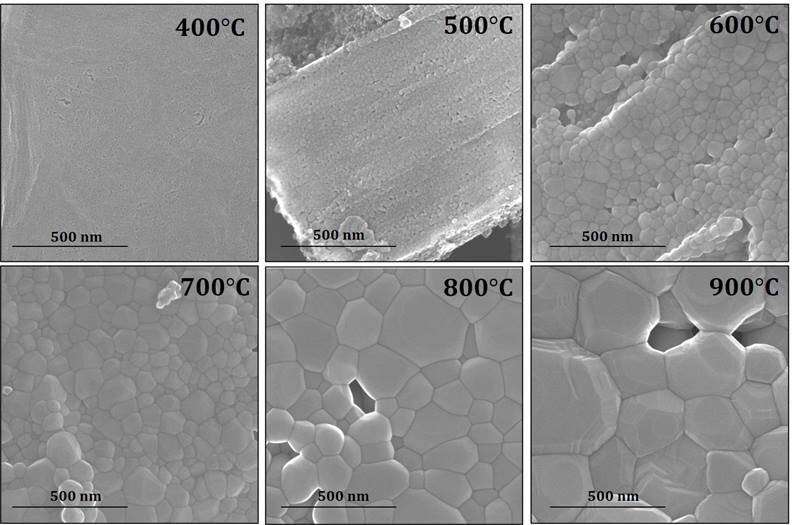Keeping waste where it belongs: Grain size explains how spent nuclear fuel enters the environment

When compounds in spent nuclear fuel break down, they can release radioactive elements and contaminate the ground and water. Scientists know that one spent fuel compound, neptunium dioxide, reacts with water, but they do not fully understand the process. A study has used advanced electron microscopy techniques to investigate how the microscopic structure of neptunium dioxide drives chemical reactions that lead it to dissolve into the environment. The results revealed that neptunium tends to dissolve where grains of the material come together, known as grain boundaries. Neptunium is less prone to dissolve at the grain boundaries of larger grains of material as compared to smaller grains of materials.
Impact
Nuclear power plants produce highly radioactive waste in the form of spent nuclear fuel. To prevent radiation from escaping, plant operators store spent fuel in pools and dry casks at nuclear reactor sites. However, this is not a permanent solution. To safely store radioactive materials for hundreds of thousands of years requires underground disposal in geologically stable sites. Planning this storage requires thorough predictions of how the waste can chemically transform to ensure that it is environmentally safe. This study reveals that processing neptunium dioxide in ways that yield larger grains and fewer defects drastically reduces neptunium's solubility—its ability to dissolve. This reduces the environmental impact of nuclear waste. These insights will help inform policy decisions on legacy nuclear waste disposition.
Summary
Neptunium dioxide is found in legacy nuclear waste that shows a complex structure with nanoscale grains and prominent grain boundaries. Grain boundaries are sites where the crystal order of the solid is perturbed and often lead to increased diffusion and chemical reactivity. Grain boundaries in neptunium dioxide contain a soluble hydroxide phase, which is readily oxidized and easily dissolved when in contact with water and can result in increased neptunium concentrations in natural waters. The erosion of grain boundaries causes the breakage of entire grains from the matrix and eventually results in neptunium in both aqueous and colloidal solution, which can affect environmental fate and transport assessment.
This in-depth study of neptunium dioxide microstructure revealed that grain size can be increased by an order of magnitude by processing the material at high temperature. High temperature recrystallization induces grain growth, which decreases surface defects and surface area, lowering the free energy of the material. Larger neptunium dioxide grains result in increased stability and decrease solubility by two orders of magnitude. By examining dissolution mechanisms at the solid-water interface, this study closes a key gap for understanding environmental release of radioactive elements. The results are expected to have far-reaching environmental implications for performance assessment.
More information: Kathryn M. Peruski et al, Grain boundary facilitated dissolution of nanocrystalline NpO2(s) from legacy waste processing, Environmental Science: Nano (2020). DOI: 10.1039/D0EN00262C
Kathryn M. Peruski et al, Effect of calcination temperature on neptunium dioxide microstructure and dissolution, Environmental Science: Nano (2020). DOI: 10.1039/D0EN00689K
Provided by US Department of Energy




















